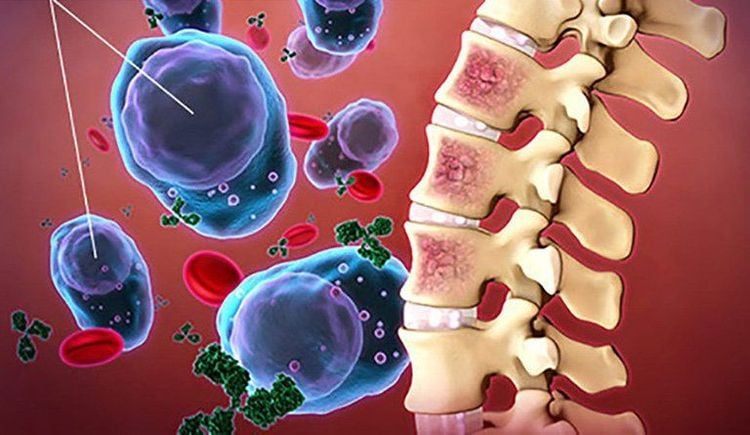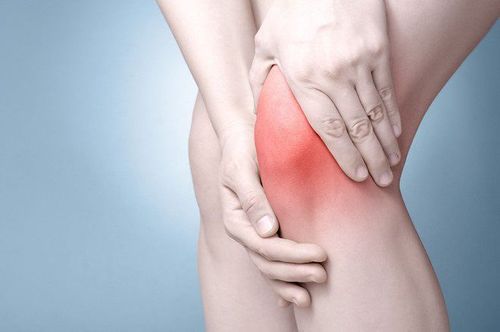This is an automatically translated article.
Osteomyelitis is an infection of the bones, a rare but serious condition. The bone can become infected by blood-borne spread into the bone, or an open fracture or surgery can cause the bone to become infected. Osteoarthritis of the arm is a form of osteomyelitis in the arm that requires early and proper treatment to preserve arm function.1. Causes of osteomyelitis
In most cases, a bacteria called Staphylococcus aureus, which is a staph bacteria, causes osteomyelitis.
In addition, some chronic diseases such as diabetes can increase the risk of developing osteomyelitis.
Only 2 out of every 10,000 people have osteomyelitis. Osteomyelitis can present in both children and adults, although in different ways. Certain conditions and behaviors that weaken the immune system increase a person's risk of developing osteomyelitis, including:
Diabetes (most cases of osteomyelitis stem from diabetes) Sickle cell disease HIV or AIDS Rheumatoid arthritis Intravenous drug use Alcoholism Long-term steroid use Hemodialysis Poor blood supply Recent trauma Bone surgery, including hip and knee replacements, It also increases the risk of bone infections.

Bệnh viêm xương tủy xương do một loại vi khuẩn được gọi là Staphylococcus aureus gây ra
2. Symptoms of osteomyelitis
In children, osteomyelitis is usually acute. Acute osteomyelitis comes on quickly, is easier to treat, and is better overall than chronic osteomyelitis. In children, osteomyelitis usually manifests in the bones of the arms or legs.In adults, osteomyelitis can be acute or chronic. People with diabetes, HIV, or peripheral vascular disease are more susceptible to chronic osteomyelitis, a disease that persists or recurs, despite treatment. Whether chronic or acute, osteomyelitis most often affects the pelvis or vertebrae of adults. It can also occur in the feet, especially in people with diabetes.
Acute osteomyelitis develops rapidly over a period of 7 to 10 days. Symptoms of acute and chronic osteomyelitis are very similar and include:
Fever, malaise, fatigue Nausea Nausea The infected area is tender, red, and warm Swelling around the affected bone Loss of range of motion motion.
3. When is humeral osteomyelitis indicated?
Osteomyelitis of the arm is a purulent inflammation of all the bone components in the humerus. In particular, the inflammation in the humerus that causes bone death is chronic osteomyelitis.Indications for treatment of cases of humeral osteomyelitis with dead bone is surgery to remove the dead bone mass and drain the infection.
4. Surgical treatment of humerus humerus
Finding out if a person has osteomyelitis is the first step in treatment. It's also surprisingly difficult. Doctors rely on X-rays, blood tests, MRIs, and bone scans to get a picture of what's going on. A bone biopsy helps identify the type of organism, typically bacteria, causing the infection so that appropriate medication can be prescribed.Treatment focuses on stopping the infection and preserving as much function as possible. Most people with osteomyelitis are treated with antibiotics, surgery, or both.
Antibiotics help control infection and often help avoid surgery. People with osteomyelitis are usually given antibiotics for a few weeks intravenously, and then switched to pills.
More severe or chronic osteomyelitis in the arm requires surgery to remove the infected tissue and bone. Osteoarthritis surgery prevents the infection from spreading further or getting so bad that amputation is the only remaining option.
The person performing the surgical procedure is an orthopedic surgeon. The necessary tools include tools for bone surgery, bone drills, drainage tubes.
Principles of treatment in humeral osteomyelitis in the chronic stage
Clean up the inflammatory foci including inflammatory tissues and dead bone fragments Leveling and filling the osteomyelitis void with specialized materials Leads Thoroughly save inflammation Use antibiotic therapy based on antibiogram Recover with a nutritious diet Steps to perform surgery for humerus
Patient is supine and under general anesthesia endotracheal intubation or administer brachial plexus anesthesia. The doctor will make an incision in the anterolateral position of the arm. Perform a fascia dissection of the arm muscle to reveal the foci of osteomyelitis. The inflammatory bone is then chiseled out or perforated to open the bone window. Use a scraper to remove the inflammation and remove dead bones. Finally, clean the inflammation with a solution of 0.9% Nacl and Hydrogen peroxide. Set drain. Place the cast splint.

Bác sĩ sẽ căn cứ vào các kết quả chụp chiếu, xét nghiệm để đưa ra phương án điều trị bệnh viêm xương cánh tay
5. Post-operative follow-up for humeral osteomyelitis
The patient was followed up postoperatively and drained after 72 h. Antibiotics were administered according to the antibiogram for 7 to 10 days. Arms were cast in a U-shape, or Desault powder. And make an appointment to see the patient again after 4 weeks.6. Complications and management after surgery for humerus humerus
Complications from surgery for humerus can be bleeding and pancreatic bleeding.Treatment:
Compression bandage. Hemostasis surgery. Surgical site infections need to be treated with antibiotics according to the correct antibiogram, dressing changes, and good drainage.
Osteoarthritis surgery is a difficult technique, requiring a skilled and specialized doctor. To avoid complications after surgery, you should choose reputable medical facilities to perform.
Currently, humeral osteomyelitis surgery is being performed routinely at Vinmec International General Hospital. At Vinmec, there is a team of qualified doctors and nurses, investing in the country's leading modern medical equipment to help diagnose the disease accurately, provide timely emergency treatment, and successfully treat many cases. It is difficult to help patients recover their motor function, minimize complications after surgery, comprehensive medical services are convenient and quick to save time in medical examination and treatment for patients.
Please dial HOTLINE for more information or register for an appointment HERE. Download MyVinmec app to make appointments faster and to manage your bookings easily.













